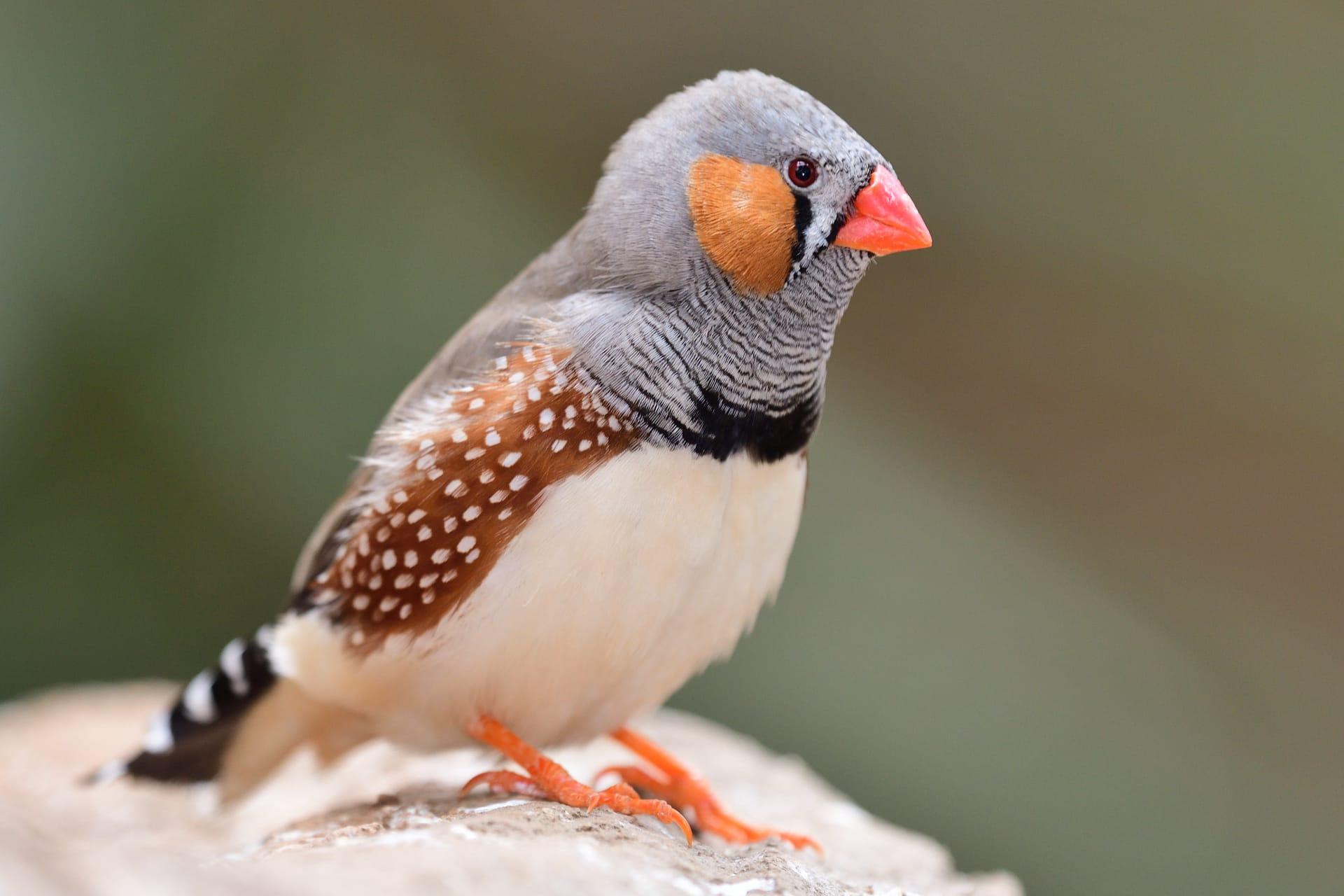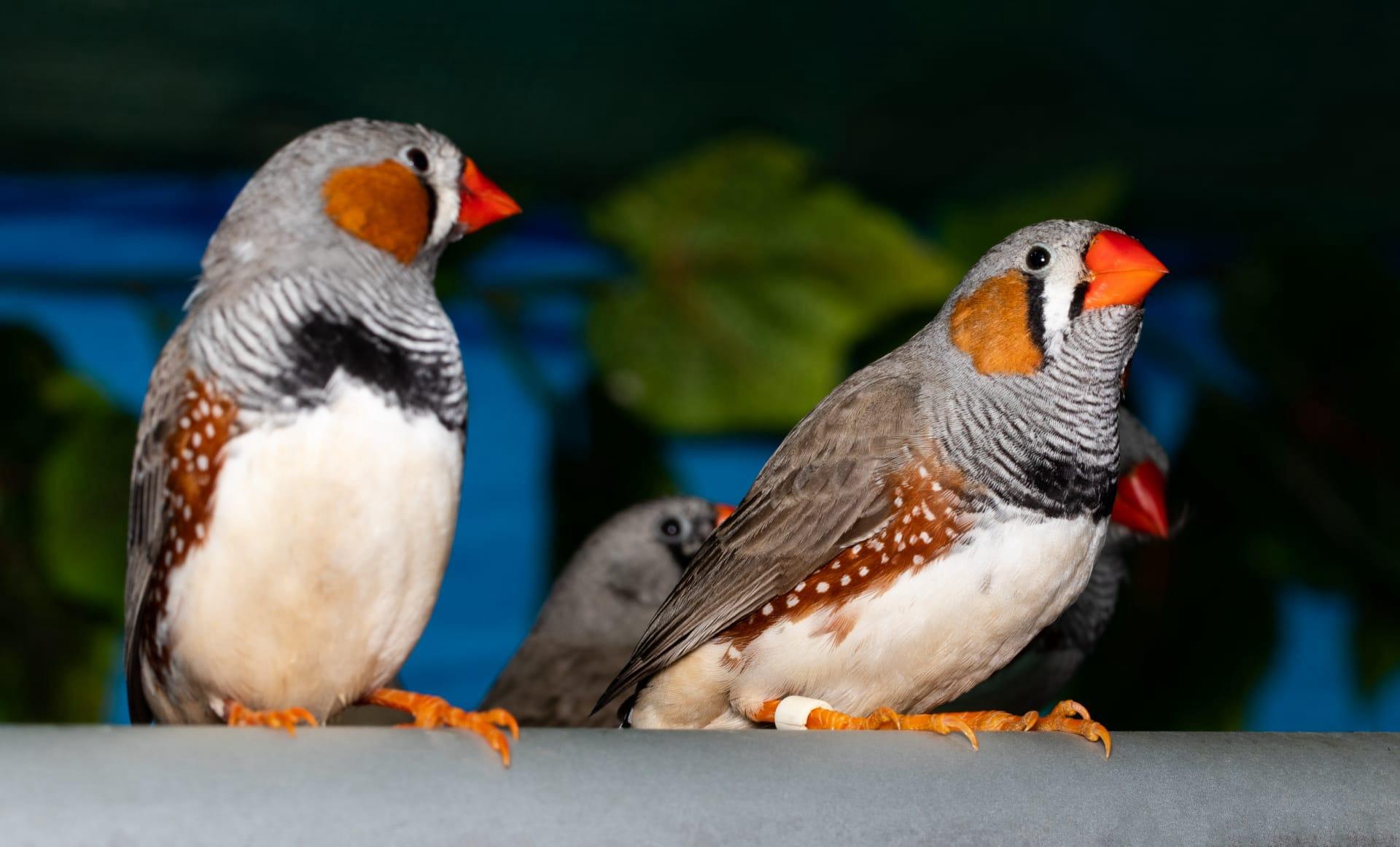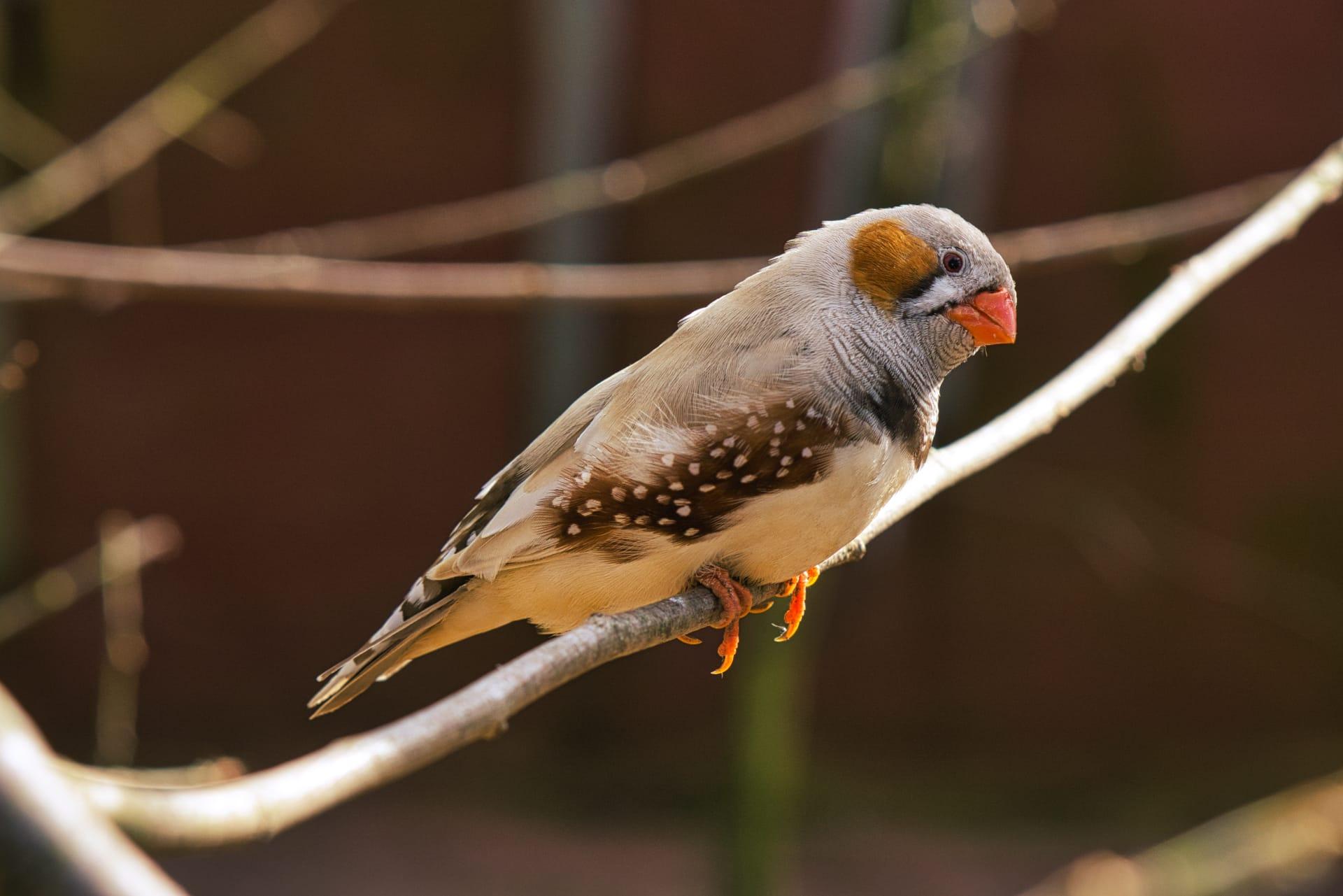Zebra Finch
- Home /
- Mini Encyclopedia /
- Animal /
- Zebra Finch
1
Zebra Finches, scientifically known as Taeniopygia guttata, belong to the family Estrildidae, which is a part of the larger avian order Passeriformes. This classification places them alongside many other small, seed-eating birds commonly known as finches. They are characterized by their distinctive barred black and white tail and chest patterns, which resemble a zebra's stripes, hence their name. The males are particularly striking, with bright orange cheek patches and a vivid, black and white barred pattern on their throats and chests.
Originally from the arid areas of Central Australia, Zebra Finches have expanded their habitat to various parts of Indonesia and East Timor. They thrive in a range of environments, from the edge of forests to open grasslands and even urban areas. Remarkably adaptable, they prefer locations near water sources but can survive in dry areas thanks to their ability to find water in unlikely places. Their spread to different regions demonstrates their impressive adaptability to various climatic conditions.

2
Question: Do Zebra Finches mate for life?
Answer: A common misconception about Zebra Finches is that they form lifelong pair bonds. In reality, these birds are socially monogamous, meaning they form a bond with a single partner for the duration of a breeding season or several seasons, but not necessarily for life. Research shows that while they exhibit strong pair bonding, these bonds can change from season to season. Factors such as the survival of the partner and the success of breeding play a crucial role in whether the pair stays together for subsequent breeding seasons.

3
Zebra Finches have developed several survival strategies to thrive in their environments. One key adaptation is their breeding strategy. They breed opportunistically, taking advantage of favorable conditions. When food and water are abundant, they can breed at any time of the year, allowing them to maximize their reproductive success. Their nests are built in a variety of locations, from trees to man-made structures, showcasing their adaptability.
Another aspect of their survival strategy involves their diet. Zebra Finches are primarily granivorous, feeding on a variety of grass seeds. However, they are also opportunistic feeders and will consume insects, especially during the breeding season, when the demand for protein is higher. This varied diet helps them to survive in changing environmental conditions. Additionally, their ability to travel long distances in search of food and water sources is a critical component of their survival in the often harsh climates they inhabit.

4
In their ecosystems, Zebra Finches play a significant role in seed dispersal. As they feed on seeds, they inadvertently contribute to the spread of various plant species. This seed dispersal is crucial for maintaining the diversity and health of their habitats. The spread of seeds to new locations helps in the regeneration of plant life, which in turn supports a variety of other wildlife.
Moreover, Zebra Finches are also important as prey species in their ecosystems. They provide a food source for predators such as birds of prey, snakes, and larger mammals. This predatory relationship is vital for maintaining the balance in the food web. Their presence and abundance in an ecosystem can indicate the health of the environment, making them valuable as indicator species for ecological research and conservation efforts.

5
Film: "The Secret Life of Finches" is a fascinating documentary produced in the United States in 2021. It delves into the intricate social structures, mating rituals, and survival strategies of various finch species, including the Zebra Finch. The documentary uses stunning visuals and expert commentary to bring the hidden world of these birds to light, showcasing their adaptability and resilience in diverse environments.
Book: "Finches and Sparrows" by Peter Clement, first published in the UK in 1999, is an exhaustive guide that includes the Zebra Finch. The book offers detailed descriptions, beautiful illustrations, and insights into the habitat, behavior, and distribution of these birds. Clement's work is renowned for its accuracy and depth, making it an invaluable resource for bird enthusiasts and ornithologists alike.
Book: Another notable book is "The Zebra Finch: A Synthesis of Field and Laboratory Studies" by William T. Cooper and Ian Rowley, published in Australia in 1995. This book combines extensive field research with laboratory studies to provide a comprehensive overview of the Zebra Finch's life cycle, behavior, and ecology. The authors' meticulous approach offers readers a thorough understanding of the species, contributing significantly to the field of avian biology.